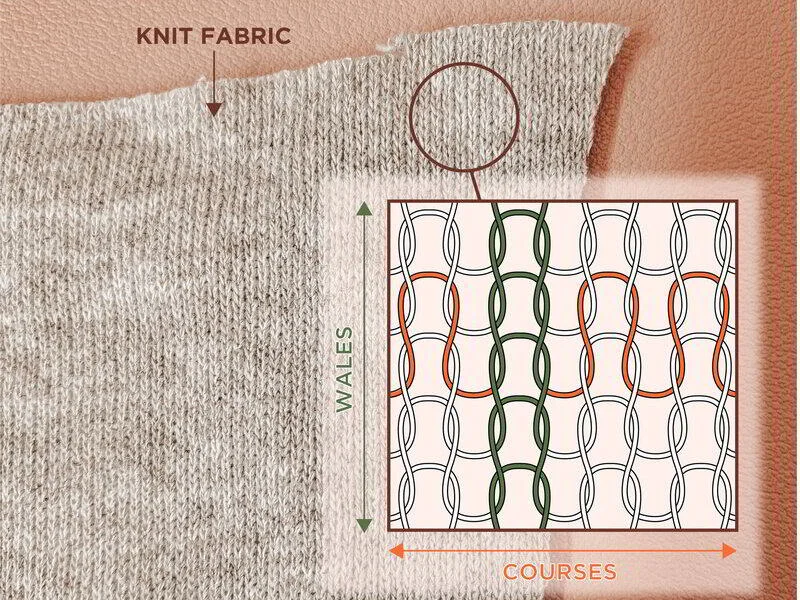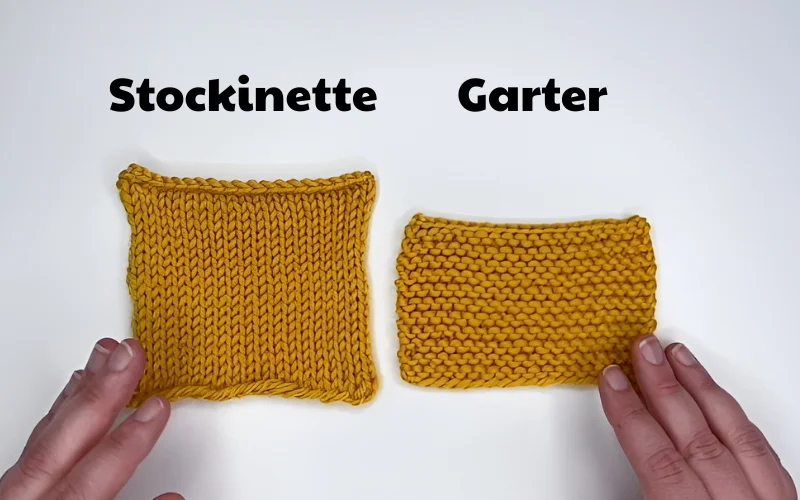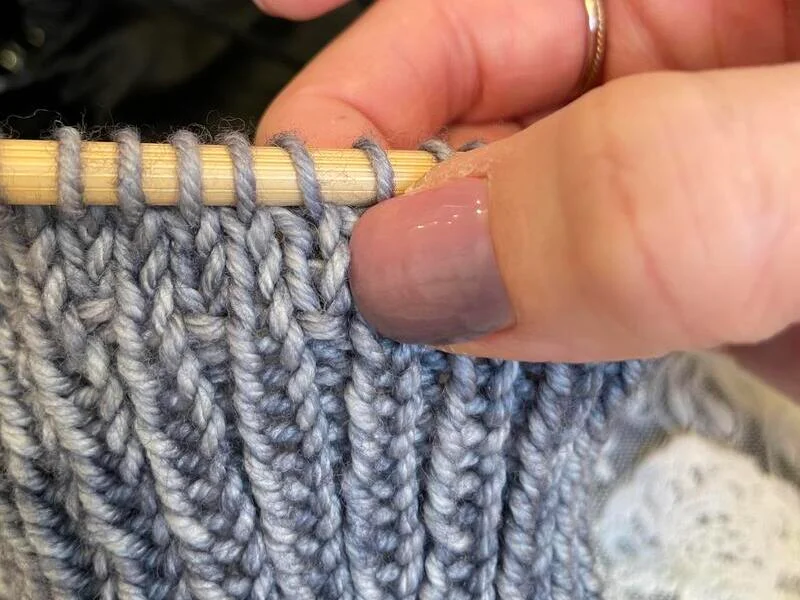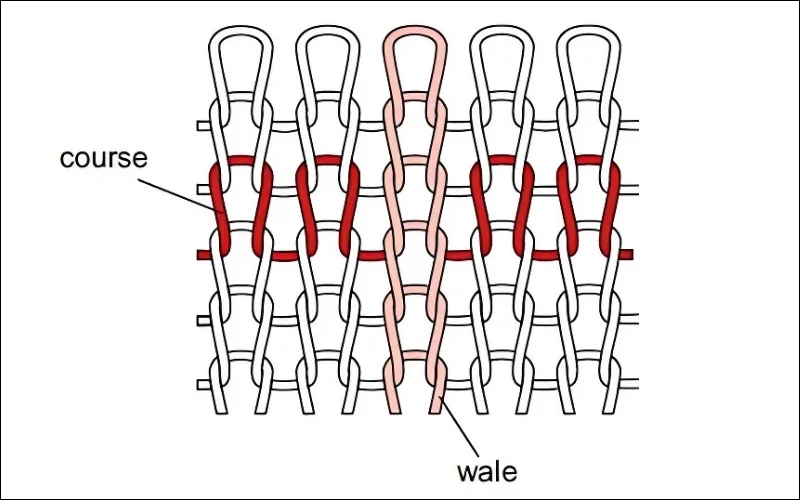What Are Courses in Knitting? Easy Guide for Beginners
Knitting is a wonderful and fun craft to learn. Like any new skill, it has its own special words. One very important word you’ll hear often is “courses.” This article will explain what courses are in knitting. Knowing about courses will make your knitting journey smoother. It will help you create lovely knitted items.
1. What exactly are “courses” in knitting?
1.1 Simple definition
In knitting, courses are the horizontal rows of stitches. Think of lines going across your knitting – those are courses. These are the fundamental horizontal stitch lines in knitting.

1.2 How courses are made
You create one course every time you knit (or purl) all the stitches from one needle onto the other needle. So, when you have worked one complete row, you have made one course. This involves using your yarn and knitting needles.
1.3 Easy analogy
Imagine you are building a wall with toy bricks. Each single line of bricks that you lay across the wall is like one course in your knitting. Just like you build the wall row by row, you build your knitting course by course. Or think of the lines on a ruled page of a notebook.
2. Seeing is believing: What do courses look like?
Sometimes, seeing is the easiest way to understand! Let’s look at what courses look like in some common knit fabric. These visual examples of courses in different types of knit stitches will help.
2.1 Identifying courses in common knit fabrics
- Garter Stitch: Garter stitch fabric is known for its bumpy, horizontal ridges. This is important: each of these ridges in garter stitch is actually made of two courses (two rows of knitting). If you look very closely at one ridge, you’ll see it’s made of two wavy lines of stitches, one on top of the other. Each of those wavy lines is one single course.
- Stockinette Stitch: Stockinette stitch has one smooth side and one bumpy side. On the smooth side (this is often called the ‘knit’ side), courses look like neat rows of little ‘V’ shapes. Each row of these ‘V’s is one course. On the bumpy side (the ‘purl’ side), courses look like rows of small horizontal bumps or bars. Each row of these bumps is one course.

3. How to count your knitting courses accurately
3.1 Why counting courses matters
Counting your courses is very useful. First, it helps you make your knitting the right length. For example, a pattern for a scarf might tell you to ‘knit for 50 courses’. This is key for hand-knitted garments. Second, you need to count courses to follow instructions in a knitting pattern.
Patterns often tell you to change stitches or shape your knitting (like for sleeves or necklines) after a certain number of courses. Knowing how to count courses in a knitted garment is essential.
3.2 Step-by-step guide to counting courses
Here is a method for counting courses in knitted fabric:
- Preparation: To count your courses, first lay your knitting flat on a table. Make sure you have good light so you can see the stitches clearly.
- Stockinette stitch (smooth ‘V’ side): Look at the smooth side with the ‘V’ shapes. Count each horizontal row of ‘V’s. Each complete row of ‘V’s is one course.
- Stockinette stitch (bumpy purl side): If you look at the bumpy purl side, count each horizontal row of bumps. Each row of bumps is one course.
- Garter stitch: For garter stitch, you have two easy ways to count. First, you can count each single wavy line of stitches. Each wavy line is one course. Or, many people find it easier to count the number of garter ridges (the bumpy lines) and then multiply that number by two. Remember, each ridge is made of two courses.
- Tool suggestion: If you are knitting something big with many courses, a ‘row counter’ tool can be very helpful. You click it after each row so you don’t lose count. You can also make a small mark on a piece of paper for every 10 rows you knit.

3.3 Tips for easy counting
- Good light is your friend! Always count where you can see the stitches well.
- Use the tip of your knitting needle or a ruler to point to each course as you count it. This helps you keep your place.
- For garter stitch, choose the counting method (individual wavy lines or ridges x 2) that feels easiest for you.
4. The big deal: Why understanding courses is super important
4.1 Achieving the correct length and size
Knitting patterns rely on course counts for size. They might say ‘knit 70 courses for the back panel of this sweater.’ Understanding courses helps you make items like sleeves or the body of a sweater the correct length for your hand-knitted garments.
If you don’t track your courses, your project could end up too short, or even too long, and might not fit as intended.
4.2 Following knitting patterns with confidence
Knitting patterns use the word ‘courses’ or ‘rows’ constantly (they mean the same thing in this context!). You’ll see instructions like, ‘Repeat these 4 courses for the pattern’ or ‘Decrease 1 stitch at each end on every 6th course.’ When you know what courses are and how to count them, you can follow these instructions without confusion and complete your projects successfully. This is fundamental to how to read knitting patterns.
4.3 Courses and knitting gauge
Gauge is a very important word in knitting. It tells you how many stitches and how many courses (or rows) should fit into a specific measurement, usually 4 inches or 10 centimeters. The number of courses that fit into that measurement is called your ‘course gauge’ or ‘row gauge’. Getting the right course gauge is crucial for your project to be the size the pattern designer planned.
The importance of courses for knitting gauge cannot be overstated, as there is a direct relationship between your course count and your knitting gauge.
If your course gauge is off (for example, you knit more courses in 4 inches than the pattern says), a sweater might end up being too short, even if the width is correct!
4.4 Making sure your knitting looks good
When your courses are knitted evenly, your finished knitting looks much neater and more professional. It gives your items a beautiful, consistent texture. Even courses usually come from having consistent ‘tension’ – that means how tightly or loosely you hold and manage your yarn as you knit each stitch and each course.
This kind of careful, even knitting makes your hand-knitted garments truly special and shows your skill. When you’re proud of your beautifully even courses and the overall quality of your work, adding a custom woven label from Packlove can be the perfect way to highlight your craftsmanship and brand your handmade items.
Ready to add a professional touch to your creations? Explore custom woven labels at Packlove!
5. Quick clarification: Courses vs. wales
Just to be super clear, remember that courses are the rows that go across your knitting, horizontally, from side to side. You might also hear the term ‘wales’ in knitting. Wales are different from courses.
Wales are the columns of stitches that go up and down your knitting, vertically, from the cast-on edge to the cast-off edge. Knitted fabric comprises both courses and wales. An easy way to remember what courses and wales mean in knitting is to think of a piece of graph paper or a calendar grid. The courses are like the horizontal rows, and the wales are like the vertical columns.

6. Common questions about knitting courses (FAQs)
6.1 What if my courses look uneven?
This is a very common thing for new knitters, so don’t worry! Uneven courses usually happen because your knitting ‘tension’ (how tightly or loosely you pull your yarn) changes a bit while you knit.
The good news is that your tension will naturally become more even with practice. Just keep knitting, and you’ll see improvement!
6.2 Does the type of yarn affect how courses look?
Yes, it definitely does! Different types of yarn will make your courses look quite different. For example, a thick, chunky yarn will create big, bold courses. A thin, smooth yarn (like cotton or merino) will make smaller, more delicate-looking courses.
Yarns with texture, like fluffy mohair or bumpy bouclé, will also change the appearance of your courses.
6.3 How do I fix a mistake in a previous course?
Learning to fix mistakes is a normal part of knitting for everyone! How you fix it depends on the mistake. For small errors close to your needles, you can sometimes carefully un-knit stitch by stitch (this is often called ‘tinking’ – which is ‘knit’ spelled backwards!).
For bigger mistakes made several courses down, you might need to gently pull out your needles and unravel a few rows. Correcting dropped stitches within a course is a useful skill to learn, though fixing mistakes is a broad topic.
Read more:
Great job! Now you know the secret: courses in knitting are simply the horizontal rows of stitches that go across your work. Understanding what courses are, how to see them, and how to count them is a big step in your knitting adventure.
It helps you make sure your projects are the right size, follow knitting patterns more easily, and make your finished items look fantastic. Keep practicing your knitting, and very soon, spotting and counting courses will feel completely natural to you!
At Packlove, we provide educational content for crafters because we love supporting creative people like you. As your knitting skills grow and you begin to create beautiful hand-knitted garments and other items that you’re really proud of, remember that adding a special, personal touch can make them even more special.
A custom woven label on your hand-knitted items featuring your unique course work, or a nicely designed hang tag, can really show off your hard work. When you’re ready to give your handmade treasures that extra professional and loving finish, explore Packlove’s range of beautiful labels and tags. Packlove offers a range of label materials perfect for all kinds of knitwear.






















